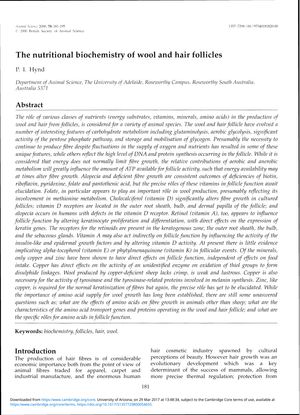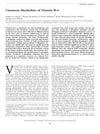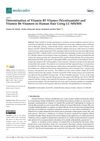95 citations
,
July 2006 in “British Journal of Dermatology” Vitamin D receptors in hair follicles change with the hair cycle, affecting hair growth.
17 citations
,
October 1997 in “Australian Journal of Agricultural Research” Stocking rate affects wool follicle inactivity, not Merino strain.
11 citations
,
October 1997 in “British Journal of Dermatology” Wool follicles grew fibres for 8-10 days in a serum-free culture, influenced by calcium, glucose, amino acids, and insulin.
228 citations
,
January 1997 in “Birkhäuser Basel eBooks” Keratin proteins and their genes are crucial for hair growth and structure.
37 citations
,
June 1996 in “Journal of cellular physiology” Retinoic acid, glucocorticoids, and IGF1 increase IGFBP-3 production in human dermal papilla cells, affecting hair growth.
42 citations
,
February 1996 in “Journal of Investigative Dermatology” Polyamines, especially spermidine, are essential for hair growth.
42 citations
,
August 1995 in “British journal of dermatology/British journal of dermatology, Supplement” RXR-alpha is strongly expressed in both normal and psoriatic skin and may help in skin cell differentiation and hair growth.
96 citations
,
August 1995 in “Bone” Vitamin D3 is important for bone health and may help treat various diseases beyond bone-related conditions.
21 citations
,
December 1994 in “Journal of Investigative Dermatology” 27 citations
,
September 1994 in “The journal of investigative dermatology/Journal of investigative dermatology” Small amounts of Vitamin D3 can boost hair growth, but too much can stop it.
20 citations
,
February 1994 in “In vitro cellular & developmental biology. Animal” Wool follicles can grow in a lab with the right nutrients and conditions.
71 citations
,
June 1993 in “Journal of Investigative Dermatology” 745 citations
,
February 1992 in “Trends in genetics” Hair follicles create different cell layers and proteins, controlled by various molecules.
 44 citations
,
December 1991 in “Annals of the New York Academy of Sciences”
44 citations
,
December 1991 in “Annals of the New York Academy of Sciences” EGF and FGF help hair growth by affecting cell differentiation and fiber growth.
385 citations
,
November 1990 in “Journal of Cell Science” Human hair follicles can grow in a lab setting.
2 citations
,
February 1990 in “PubMed” DDR-II hair follicle cells don't respond to 1, 25-dihydroxyvitamin D3, aiding diagnosis.
29 citations
,
December 1989 in “The journal of nutrition/The Journal of nutrition” Mice's intestinal uptake of pantothenic acid is not affected by dietary levels.
11 citations
,
January 1989 in “PubMed” Biotin improved fur and skin conditions in most dogs.
7 citations
,
May 1985 in “Archives of dermatology” Vitamin D is important for more than just bone health.
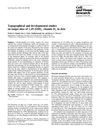 70 citations
,
November 1984 in “Cell & tissue research/Cell and tissue research”
70 citations
,
November 1984 in “Cell & tissue research/Cell and tissue research” Vitamin D3 affects cell differentiation in specific skin areas.
45 citations
,
June 1984 in “Journal of the American Veterinary Medical Association” Zinc supplements quickly improved health issues in sheep and goats.
9 citations
,
February 1984 in “Zentralblatt für Veterinärmedizin Reihe A” Biotin is essential for healthy skin and claws in pigs.
31 citations
,
February 1983 in “American Journal of Clinical Nutrition” Biotin deficiency can cause hair loss in adults on long-term TPN, but supplementation helps regrow hair.
8 citations
,
September 1981 in “Zentralblatt für Veterinärmedizin Reihe A” Biotin deficiency in pigs causes hair loss, skin issues, and weak claws.
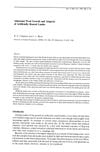 9 citations
,
February 1981 in “Australian journal of biological sciences”
9 citations
,
February 1981 in “Australian journal of biological sciences” Lambs fed a liquid diet showed abnormal wool and skin, which improved with more B-vitamins, suggesting a link to B-vitamin deficiency.
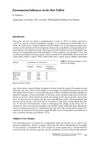 12 citations
,
January 1981 in “Springer eBooks”
12 citations
,
January 1981 in “Springer eBooks” Environmental factors like temperature and nutrition affect hair growth, with humans showing seasonal hair growth differences.
19 citations
,
March 1975 in “British Journal of Dermatology” A new method accurately measures cyclic AMP levels in small skin and hair samples.
 8 citations
,
April 1965 in “Archives of biochemistry and biophysics”
8 citations
,
April 1965 in “Archives of biochemistry and biophysics” Sheep wool follicles can metabolize both glucose and acetate using different pathways important for wool growth.
11 citations
,
March 1959 in “Journal of Histochemistry & Cytochemistry” Sulphur, phosphorus, and metals are distributed differently in animal skin follicles, with variations in detection speed and location.
